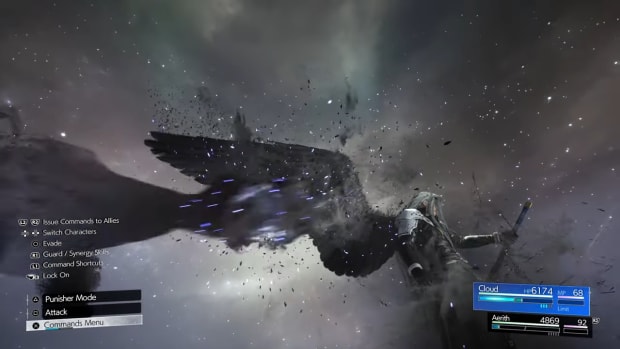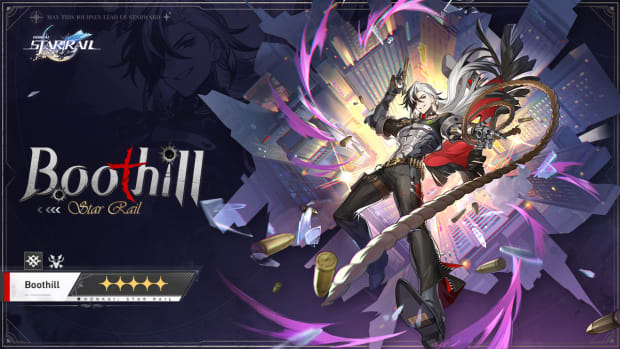How Hitman’s new mode was inspired by Hades and Escape from Tarkov
It’s always felt déclassé to use a gun in the Hitman games. A perfect run through a Hitman level sees you take out your targets without leaving a trace, and it usually looks like they died due to some unfortunate accident. If you mess up, you can always load up a save. With Hitman: Freelancer, you’re the one who’s going to be in an accident.
Freelancer is a new mode for Hitman 3 (which now includes all the maps from the previous two games for the low, low cost of $0.00). It flexes a different muscle to the usual Hitman modes by forcing you to live with your mistakes, improvise, and hastily clean up whatever mess you make before you’re spotted. And if you are spotted, you gotta live with that, too.
There are no save games in Freelancer while you’re on a mission, and failure means the mission is over forever, lost along with whatever equipment you took with you. When you pull off a contract, you escape and fill up the walls in your safehouse with the murder tools you’ve acquired, a bit like the old shed in the original Hitman 2.
Complete a handful of ordinary hits and you’ll eventually land on a Showdown – special missions where you’re tasked with identifying your target from a series of traits and tells, before taking them out as discreetly as possible. Murder the wrong one and they’ll likely escape, putting you right back at the start. The same goes if you die. Good luck, 47.
My first Showdown happened in Sapienza, a map that I thought I knew better than my sons but somehow introduced me to an area I’d never seen before. Each Hitman level is a masterpiece of level design, creating the kinds of intricate spaces other games could only dream of. My target is wearing a hat, attempting a hand-off, and is known to be a bookworm.
I’d been tracking a few suspects for a while and eventually whittled it down to one person, who I was sure was the target. There was just one problem: they were right in the middle of the town square, surrounded by people, and tailed by a bodyguard and an assassin. After 10 minutes of tailing them, looking for an opening, I realized I needed to take a different approach. A pistol and a few coins weren’t going to cut it.
I search the map for a black market arms dealer, buy a high-powered sniper rifle, and set myself up on a roof overlooking the bench where she takes reading breaks. Breathe in, squeeze the trigger – gently – pop, red mist, and I’m already packing the rifle back into its briefcase before she hits the ground.
Freelancer feels like the game mode that the past three Hitman games have been preparing us for. It’s already spoon-fed us the big showcase kills, we’ve explored these levels, and we’ve hit the designated story targets, but now the real test begins. You’re like a London cab driver being quizzed on the street names.
“I would say that the Opportunities and Mission Stories were a response to us wanting to make the games a little bit more accessible,” associate game director Jonas Breum Jensen explains. “Players who are maybe not familiar with stealth games, or the Hitman games, we wanted them to see the number of different approaches you could take. And we wanted some of the more hand-polished, signature kills to be way more accessible for players. So I see them as something you can do as an onboarding experience for the game.
“But when you have tried that, then the community players advance and they would find their own ways around it, maybe even start a fresh location without even following the Opportunities. I think that's where we pick up with Freelancer. So it's definitely about not relying on scripted handhold experiences, but more trying to double down on that it's a systemically-based game. We want players to understand the mechanics and the rules and play with them to be able to come up with creative solutions.”
It’s a true water cooler game, where chatting with other players opens your eyes to the possibilities. Speaking of water coolers, did you know the water leaks out if you shoot them? People will slip on it and, eventually, someone will come and clean it up. Mess with some electronics before you cause the spill and you’ve got a nice trap for the next person to wander over. Hitman is packed full of interactions like this. NPCs have routines, but you can disrupt those routines with a range of actions – including, but not limited to, murder – and influence how the pieces on the board move. There’s so much depth if you’re willing to experiment, and Freelancer is the perfect place to do it.
This isn’t just limited to the mechanics either – each map is packed with stuff you might not see even after a handful of playthroughs. As gameplay director Torbjørn Vinther Christensen says: “When we at the end of Hitman 3 and we were thinking about the live content, we realized we had three massive games of sandboxes where a lot of players have done the Mission Stories or Opportunities, but there's so much content that no one has ever seen before when they play. You're like, ‘Oh shit, there's a basement underneath this villa? I didn't even know.’ So we thought about that and how we can utilize all those sandboxes over and over in a good way. Because there's so much fun gameplay that you miss if you just do the story.”
Adding new content to a game as complex as Hitman is no easy task either. Not only is each level layered and deep, but it also has to be logical. Then you have the NPCs who are on their routines until the player pulls them off the tracks, and the entire thing has to keep working even when the player keeps pulling all the cogs out of this clockwork mechanism. It’s a recipe developer IO has been perfecting since 2000, and most recently with this trilogy of new Hitman games. Freelancer is the emetic poison salad dressing.
“If you look at the three games in the trilogy, we were learning how to do it in the first one,” Christensen says. “And there's some hits and some misses. I was a lead on the level design on the second one, and we tried to make all the levels follow the same rules and do it in the same way. In the first one, they played quite differently sometimes. And then the third game we started to perfect the formula. But also some of the experiences became a bit more linear and cinematic because we wanted some grand experiences out of it. So the sandboxes shrunk a little bit in some of those levels. But yeah, it is a pain in the ass to do. It's a lot of work. It's a different kind of special design you have to do when it's not a massive open world. It's a smaller contained sandbox, but it still feels like it's living and breathing. And you can poke it from all directions and stuff. It’s a challenge to design, a challenge to QA.”
To make those levels even more complex, Freelancer has a set number of NPCs that it can assign as targets for you on any given mission – and don’t forget, this is across almost every map in the trilogy. IO picked a set amount of NPCs who have interesting routes and marked them as potential targets, then it added the same amount of new NPCs who could also be targets – enough in total to make sure each run at Freelancer feels significantly different. On top of this, the algorithm makes sure targets aren’t grouped together on maps where you have to pull off multiple kills. It all feeds into the already deep systems Hitman has to create something endlessly replayable, inspired by some of the best roguelites around.
“We looked a lot at Hades,” Jensen admits. “We also looked at some mobile roguelike games, and Invisible, Inc. was another.”
“Our live director knows all roguelikes in the world, so he had a lot of good feedback,” Christensen adds. “We also looked at extraction shooters like Hunt: Showdown and Escape from Tarkov. Stuff like that. It was very interesting. It was very different from what we’re used to.”
It’ll take some adjustment for Hitman perfectionists, but Agent 47 always had skeletons in his closet. Now they’re just actual skeletons in every closet, washbasket, and locker of every map across the Hitman trilogy. You’ll kill witnesses, bumble around, take out the wrong mark, but then it’ll happen – that perfect streak. No saves. No reloading. Just skill, patience, and a bit of luck. That’s where the magic is. Oh, and you can use guns now. No one will judge you.






